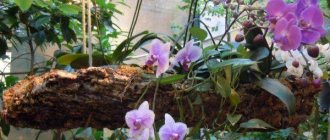In May, fragrant lilac flowers decorate parks, streets and gardens, being one of the first harbingers of spring. There are many types of lilacs known, which can vary in height from 100 to 600 cm and bloom in white, yellow, blue, purple and pink flowers.
The green leaves of lilac are heart-shaped and seem to symbolize the awakening of feelings inherent in the spring period, among which, of course, is love. Growing this magnificent shrub is not difficult, and thanks to the variety of varieties (more than 800), it can become a real hobby.
Botanical description
Lilac is a deciduous shrub native to China. Over time, the plant spread throughout Southeast Asia and Southeast Europe, where today it grows in a variety of climates. Lilacs have small to medium-sized opposite and mostly solid green heart-shaped leaves. The branches are long, the bark on young shoots is first dark green and then gray-brown. The shrub grows up to 6 m in height and blooms intensely from April to May with fragrant flowers.
Most often, lilac can be found in gardens and parks, where it grows in both single and group plantings. The plant can also be grown as a tree with a beautiful crown or used to create a flowering hedge.
Growing and care
The main difficulty in growing lilacs is choosing the type and variety. Some species can grow only up to 1.5 m in height, while others reach 6 m and higher, also growing in width. And although lilac tolerates pruning well, excessively shortened branches may stop blooming. On sale you can find species with an open (the cheapest option) and a closed root system, but both should be planted as soon as possible.
Location
The more sunlight a plant receives, the more luxuriantly it blooms, so the planting site should be well lit. Some tall species cannot tolerate strong winds and should be planted in a sheltered location. Others, on the contrary, have no problems with this and are even suitable as a wind fence.
Note! Lilacs develop a strong root system, so do not plant them too close to walls, which will hinder the growth of the entire plant.
Monochrome garden
Lilac can be planted in a monochromatic garden as a leading plant. Plants with lilac-lilac flowers will go well with purple bushes. In the flower garden you can plant ageratum, periwinkle, verbena, viola, heliotrope, hydrangea, sweet pea, iris, lavender, rhododendron, tradescantia, phlox, sage, etc.
Monochrome gardens with purple flowers and green foliage look very impressive
A monochrome white garden is also unthinkable without lilacs with snow-white flowers. Next to this shrub you can plant jasmine, anemone, astrantia, lily of the valley, snowdrop, chamomile, narcissus, etc.
These are not all possible options for using lilacs in landscape design. This plant looks great in mixed plantings next to thuja and juniper. In addition, under lilac bushes you can plant hostas with bluish leaves, as well as bulbous plants that do not need to be dug up often: galanthus, crocus, scilla, chionodoxa, colchicum. Combine plants according to the color of the flowers - and it will be impossible to take your eyes off your garden.
Planting substrate
The choice of soil depends on the species. The popular common lilac (Syringa vulgaris) grows best in nutrient-rich, fairly dry clay soil with a high lime content. Preston lilac (Syringa prestoniae) prefers calcareous and slightly moister soils. In general, all species adapt well to almost any conditions, although the following criteria are optimal:
• Nutrient-rich calcareous or slightly acidic soils with good permeability. • Ideal pH is from 5 to 7. • Soil moisture is moderately dry to moderately moist, but without the risk of waterlogging.
Watering
You need to water carefully, in parts, so that the moisture fully reaches the roots. Just don't overdo it: the soil should be well moistened, but not too wet. It is better to water when the top two to three centimeters are well dry.
Russian rubles will change their design. Improve paper quality and change images
“Children are the most valuable thing in my life”: Meladze is preparing for a new addition to the family
They want the best for the child, but sometimes to his detriment: signs of toxic parents
As for fertilizing, it is recommended to carry it out in early spring with special fertilizers with precisely selected proportions of nutrients.
Boarding time
The best time for planting is autumn, when the soil is still warm and the plant has time to take root well. In principle, it is also possible to purchase and plant in the spring. This way you can enjoy some light blooms, although not all plants will bloom in the first year (it usually takes 1 to 2 years before the first flowers appear). It is best to buy a flowering specimen to be sure that the seedling matches the variety. When planting in spring, adequate watering is necessary during the first weeks and months.
• Dig a planting hole twice the size of the root ball. • Loosen the soil well and mix with compost. Do not use peat whose pH is too acidic! • First keep seedlings with an open root system in warm water for about an hour, then carefully straighten the roots and plant them so that the main stem is at soil level. • Plant the lilac in a container as deep as it grew in the pot. • Then cover the roots with soil, tamp down and water. • If the soil is very acidic, apply a little lime to the root. Then, every 3-5 years, add lime along with irrigation water. • Mulching will protect the soil from dehydration and ensure a balanced temperature in the root zone.
Advice! Plant varietal lilacs so that the grafting site is below the soil surface. If it turns out to be too high, it may happen that shoots of ordinary lilac begin to grow.
What to delete
All small roots that surround the main root need to be removed by a third of the length. Leave small hairs that surround the main root. If the roots are very thick, use a saw. Ready. Now you can return the bush to its place. Cover with soil again, making sure the root ball is level with the soil. Such an event should be carried out once every few years, carefully monitor the growth.
Patlakh is no longer in “Dancing”: why Denisova’s favorite was kicked out, what does he do
Colored and black eyeliner: how to choose a shade for trendy bold arrows
They will decorate the yard and produce a harvest: the best ideas for above-ground beds
Growing lilacs in a pot
Not every lilac is suitable for growing indoors, at least not for a long time. For example, the common lilac can only spend the first 2-3 years in a pot if there is enough space for the root system. More suitable varieties are Syringa josiflexa and Syringa prestoniae, which feel great both in small gardens and tubs. They bloom after Syringa vulgaris, thereby extending the flowering period. Also ideal is the dwarf aromatic lilac Syringa meyeri, which grows up to 1.2m tall and wide and blooms with fragrant light purple flowers in May and June. The plant looks especially beautiful as a standard one.
• The planting container should be twice as large as the pot in which the seedling was purchased. Then the plant needs to be replanted every two years. • The drainage layer prevents water accumulation. However, watering should be carried out even in winter so that the root ball never completely dries out.
- When choosing soil, remember that lilac loves alkaline soil and does not tolerate acidic soil. To even out the acid-base balance, add about 200 grams of limestone or, better yet, dolomite.
- Never water immediately after the soil on top has dried a little. Lilacs do not tolerate swamps, so the optimal time for watering is when the soil has dried to a depth of about 2-2.5 cm.
- Lilacs need cold weather, so never suddenly move the bush from the garden to the house in the autumn-winter period. In the cold season, arrange ventilation on the balcony - otherwise the buds simply will not ripen.
- Every year at the beginning of spring, fertilizers are added to the container. The optimal formula is 10-10-10 (see article on the composition of fertilizers)
- If you see that the roots have begun to “jump” out of the flowerpot, arm yourself with a sharp knife and start removing 2.5 cm from each side of the root ball. You can also use garden shears to cut off roots that are too thick.
When it comes to crown pruning, there is no solution for all cases. Firstly, lilacs grow more slowly at home than in the garden. Secondly, even without trimming the branches, the bush will feel good. However, decorative pruning will turn your balcony garden into an aesthetic place where you can relax your soul.
Lilac is famous for the beauty of its flowers and wonderful aroma, so many people want to plant it on their site. The tree will look great in a country house or in the local area of urban buildings.
First steps after purchase
When choosing a bonsai, you need to be vigilant. It would be a shame if a sick or pest-infested plant takes up residence in your apartment. Before purchasing, carefully inspect the shoots, main trunk and leaves. The presence of mucus, mold, brown spots, multiple black spots, larvae or thin cobwebs is a sign that the Lilac is not healthy. When purchasing a flowering specimen, you should choose a bonsai with a large number of unopened buds. Thus, it will delight you with lush inflorescences longer.
As soon as the plant is at home, it is given a short quarantine. At rest, it adapts to new conditions. When Lilac gets used to the new environment, it can be assigned to a permanent place.
When choosing seeds for growing Lilac yourself, you should check the expiration date. Old material will produce weak shoots. In the worst case, they may not exist at all.
Advantage of cuttings
Lilac cuttings have advantages over other options for obtaining ready-made bushes. When using seeds yourself, difficulties may arise, since they do not always germinate easily.
Purchasing seedlings leads to additional costs, so taking lilac cuttings will also be a profitable option. If you understand the intricacies of planting using other methods, you can choose any one. Any method requires careful preparation and step-by-step procedures. Don't forget about maintenance, which should be regular.
Choosing a cutting
Before you learn how to grow lilac from a twig, you should choose the right cutting - it depends on whether the shoot will take root or not. The branch must be cut carefully. This should be done in early spring, when the cutting is not yet actively growing, otherwise it will be difficult for it to take root.
It is necessary to cut green branches of medium thickness. A cutting from the crown of a young bush, preferably from the middle, is perfect. It will be possible to grow a bush if there are 2-3 nodes and small internodes on the branch. It is advisable to cut cuttings early in the morning - they will take root better.
Other signs
The most popular belief is about flowers with an unusual number of petals. The usual number of petals for a lilac flower is four. If there are one more of them - five - this is considered a lucky sign. When an unusual flower is found, it is eaten after making a wish.
In the past, a five-petalled flower was considered a sign symbolizing that the girl who found it would quickly get married. Therefore, girls of marriageable age diligently looked for an unusual flower to meet their betrothed. If happiness smiled on them, they rejoiced and began to wait for matchmakers.
Over time, many beliefs are forgotten and become a thing of the past, leaving only the most effective and reliable ones. These include signs about plants that help predict the weather and find out your personal future. Everyone knows the 2 most popular signs about lilac branches: about the benefits of a bouquet and about five-petal flowers. Years will pass, and girls will look for the treasured flowers just like hundreds of years ago.
Lilac care
After planting in open ground, the plant requires virtually no care, at least if a good location and suitable substrate are provided. If you choose an unfavorable place for planting, lilacs become susceptible to diseases and pests. Most types of lilac are hardy enough that they do not need winter protection, except for those grown in a pot.
How to give these flowers correctly
In the language of flowers, this plant carries a certain meaning. Depending on what stage of the relationship the bouquet is given, the message changes:
- on the first date - the personification of the seriousness of the man’s intentions;
- giving lilacs in the midst of a whirlwind romance means a quick marriage proposal;
- presenting purple candles to your wife is a sign of respect, love and fidelity.
Acquaintances and friends are not shown such gestures of attention. Each bouquet is a specific symbol of the development of relationships between two people.
Let's put aside the esoteric aspects, planting and caring for lilacs will bring beauty to the world around us, give us the opportunity to admire beautiful flowers, inhale the aroma and feel nostalgic. And this puts you in a good-natured mood. So the signs will work for your benefit.
Trimming
Regular pruning promotes good branching and, accordingly, lush flowering. With the help of pruning, you can significantly rejuvenate old plants or reduce their height, which is also not a problem. Lilac easily recovers even after radical pruning, but it is better to do it immediately after flowering.
Rejuvenation pruning also results in the formation of new shoots from the roots, which may be desirable for shrubby species, but in woody species these shoots are removed immediately after pruning. The excellent ability of lilac to regenerate can be used for growing and forming hedges.
You can see how to properly prune lilacs in this video:
Theoretical diagrams for pruning lilacs and explanations of why you need to do it this way can be found in this video:
Do not forget to perform sanitary pruning every spring and throughout the summer and autumn, removing all damaged and drying branches.
When pruning, all dried and damaged branches are also removed, and the rest are cut to a length of about 20-30 cm. New shoots will begin to grow in a few days.
The most popular flowers for the bedroom
Here are 10 types of indoor flowers that have a beneficial effect on the human body and are most often chosen for the bedroom:
Chlorophytum
Chlorophytum
Removes dangerous chemical compounds, including formaldehyde, destroys harmful electromagnetic radiation, humidifies the air, kills germs and other microorganisms.
Spathiphyllum
Spathiphyllum
Produces oxygen regardless of the time of day. Purifies the air from harmful substances entering the room through an open window. Spathiphyllum is able to humidify the air and neutralizes allergens. It has a positive effect on the human psyche and ensures restful and healthy sleep.
Aloe
Aloe
produces oxygen at night. Removes electricity from the room. Eliminates toxic substances such as formaldehyde. Aloe is a medicinal representative. The washed leaves can be applied to the wound. Aloe juice is used for colds and headaches.
Kalanchoe
At night it releases oxygen and has the ability to calm. Kalanchoe helps get out of depression.
Begonia
Begonia
Removes germs and harmful substances. The aroma of Begonia helps get rid of depression. It will be useful for people of age, as well as for illnesses.
Geranium (pelargonium)
Geranium
Has disinfectant properties, removes volatile chemicals and carbon monoxide from the air. Geranium releases negative ions that have a positive effect on the body. Eliminates headaches, normalizes blood pressure, strengthens the immune system. Relieves nervous tension. Helps with insomnia. Repels insects.
Sansevieria or Mother-in-Law's Tongue
Sansevieria or Mother-in-Law's Tongue
Always releases oxygen. Stabilizes blood pressure, improves immunity, relieves headaches, and helps eliminate breathing problems. Sansevieria neutralizes formaldehyde, trichlorethylene and benzene.
Myrtle
Myrtle
Has bactericidal properties. Removes diphtheria and tuberculosis bacilli, strepto- and staphylococci. Its aroma has a positive effect on the psyche, relieves fatigue and tension, and improves sleep.
Lavender
Indoor lavender
has a pleasant aroma. Reduces anxiety, slows heart rate, promotes restful sleep, especially for infants.
Reproduction
Lilacs are very easy to propagate, so you can use them to create a beautiful hedge for free. Propagation methods include cuttings, dividing the bush, growing from seeds and grafting.
By dividing the bush, you can obtain seedlings with a powerful root system that grow faster and form stronger plants with more shoots. Growing lilacs from seeds is not profitable in terms of time. A good method is cuttings, for which, before flowering begins, you need to cut off young shoots with 4-6 buds and plant them in protected soil. If you don’t have a greenhouse or greenhouse so that the cuttings can take root, they can be pruned in the summer. Before planting, it is recommended to treat the cuttings with a growth stimulator. Under good conditions and temperatures above 20 °C, rooting occurs within 2-3 weeks, in colder conditions - from a month to a month and a half.
Seeds
This option is suitable for species specimens, since growing lilacs with seeds entails the loss of the characteristics of the variety. The method is suitable for obtaining a rootstock. Breeders are attracted to this option by the possibility of obtaining new varieties.
First, the seeds are stratified for 2 months at a temperature of +2...+5 oC, and then sown in the spring in a soil mixture of peat and sand (2:1). The germination time for all varieties is different, for example, for common lilac - 13-16 days.
After the formation of 4 leaves, the seedlings are picked at a distance of 3-4 cm. In May they can be planted in open ground, and by autumn they will adapt. With the first frost, the seedlings should be covered with a layer of peat 8-10 cm thick for the winter.
Growing lilacs can be done in other ways, for example, layering and budding. Each method has its own characteristics, but in all cases it is necessary to go through all stages of preparation so that the plant is well accepted and grows healthy.
Medicine
The lifespan of a lilac bush is 15-20 years. Lilac is a well-known medicine in folk medicine. Its bark, buds, leaves and flowers are used for medicinal purposes. Chemically, lilac has not been studied enough. It is known that its various parts contain the bitter glycoside sinigrin, essential oil, syrignopicrin and farnesol. Lilac leaves are collected in dry weather in the first half of summer. They are scattered in a thin layer and dried in the shade or in a dryer at a temperature of 40-60 ° C. The bark is collected from young stems. It is stored in a wooden container or linen bag for 2 years. The inflorescences are collected during the budding period along with the branches. They are tied into bundles and dried in the shade, under a canopy or in the attic. Lilac for kidney diseases. Infusion and tincture of lilac leaves are used in folk medicine for inflammatory kidney diseases and stones in the renal pelvis. To prepare the infusion, pour 2 tablespoons of crushed leaves into 250 g of hot water, bring to a boil, remove from heat and leave in a warm place for 2-3 hours. Then filter and squeeze. Take 1 tablespoon 4 times a day before meals. The course of treatment is 2 weeks. After 2-3 weeks, treatment can be repeated if necessary. You can conduct 3-4 courses. A tincture of leaves is prepared with vodka in a ratio of 1:20. Take it 15-20 drops 3-4 times a day before meals. Antipyretic and diaphoretic. Lilac infusion is used as an antipyretic and diaphoretic. To do this, pour 2 tablespoons of a mixture of lilac and linden flowers into 250 g of boiling water and leave for 1 hour in a warm place. Take 250 g 3-4 times a day warm. The same infusion, as well as infusion and tincture of lilac leaves (see above) stop attacks of malaria. Another lilac tincture is used in the treatment of malaria. To prepare it, wash it with water and put 20 pieces of fresh green lilac leaves into a liter bottle. Then add 2 g of fresh wormwood and 1 g of eucalyptus oil. Fill to the top with vodka and leave for 14 days in a dark place. Take a small glass before an attack of malaria once a day. If the disease does not go away, take the tincture 2-3 times a day before meals. Wound healing and pain reliever. To treat wounds, bruises, and rheumatism, lotions and compresses from tincture of lilac flowers are used, which are changed 4-5 times a day. To prepare the tincture, pour 1 glass of flowers into 0.5 liters of vodka and leave for 2 weeks. Hard-to-heal wounds and festering ulcers can be treated with a strong decoction of lilac leaves, as well as fresh leaves or the bark of young branches. In this case, the affected area is steamed with hot water and covered with well-washed fresh raw materials, after which it is bandaged. On the first day, the bandage is changed 3-4 times a day, and then once a day. Lilac tincture is used in folk medicine as a rub for joint rheumatism and lower back pain. To do this, infuse 1 glass of lilac flowers in 0.5 liters of 40 percent alcohol for 7-10 days and rub the sore spots with this tincture. For rheumatism, arthritis, osteochondrosis, you can also use another rub: 2 tablespoons of crushed fresh lilac leaves, 300 g of radish juice, 200 g of honey and 100 g of vodka, leave for 24 hours. Mix well and rub into sore areas. For gout, rheumatism, salt deposits, and joint arthritis, traditional medicine recommends the following course of treatment. Lilac flowers are loosely poured into a half-liter bottle to the top, filled with 40 percent alcohol, left for 21 days in a dark place, then filtered. Take 30 drops 3 times a day before meals for 3 months. For radiculitis, rheumatism, and polyarthritis, it is recommended to take an infusion of lilac flowers internally. To prepare it, pour 1 tablespoon of flowers into 250 g of boiling water and leave for 1 hour. Then filter and take 1 tablespoon 3-4 times a day. For radiculitis, a tincture of flowers is also used. Infuse 1 part of flowers in 5 parts of 40 percent alcohol for 7 days. Strain and take 30 drops 3 times a day. For rheumatoid arthritis, an anesthetic ointment is prepared from lilac flowers. To do this, 2 tablespoons of crushed flowers are thoroughly ground with 2 tablespoons of butter. For heel spurs, make compresses from tincture of lilac flowers and take it orally, 30 drops 2-3 times a day. Lilac for respiratory diseases. For bronchitis and pulmonary tuberculosis, an infusion of lilac flowers is used as an antitussive in folk medicine. Pour 250 g of boiling water over 1 tablespoon of flowers and let it brew for 1 hour at room temperature. Then strain and take 1 tablespoon 3-4 times a day. Lilac for diseases of the nervous system. Tea from dried lilac flowers is drunk for epilepsy.
Treatment against diseases and pests
If on the lilac itself or on neighboring bushes last year you noticed obvious signs of disease or damage by any insect pests (lilac hawk moths, powdery mildew), then before the buds open, you should treat the bushes with special solutions. For example, you can spray with a 1% solution of Bordeaux mixture or prepare a solution of copper oxychloride by dissolving 2-3 tablespoons of the product in 1 bucket of water.
But, as a rule, few people have ever heard of, much less seen, lilacs being sick or being attacked by pests.
Video: lilac care and pest control
There is nothing more beautiful and fragrant in spring than lilac bushes. However, it also has its own character and its own requirements for planting, care and pruning. Follow our advice and recommendations, and lilac will willingly grow and bloom in your area.
Video: planting, care, cultivation and propagation of lilacs
You may also find the following materials useful:
- Pansy seedlings: easy and simple to grow
- What indoor plants bloom without problems in winter?
- Pelargonium - growing from seeds
- Hydrangea: planting and care, pruning
- Poppy: planting, care and propagation
Energy and esoteric meaning
Experts say that lilac can neutralize negative energy. The bush absorbs negativity, but is not considered a distributor of bad energy. In other words, if you approach a fragrant lilac bush with a bad mood or poor health, then after 15-20 minutes your condition will return to normal.
A persistent aroma increases intuition, activates the subconscious, but reduces performance. A bouquet placed next to the bed causes a headache, but if it is left in a vase in the next room, then it will help to see a prophetic dream. The subtle aroma relaxes the nervous system and enhances a person’s esoteric abilities.
A talisman made from the branches of a young bush attracts love and speeds up a meeting with a loved one. Flowers placed in a fabric bag are considered a talisman for the hearth. They are the key to happiness and family well-being.











